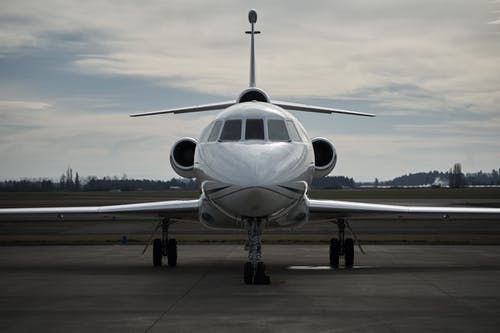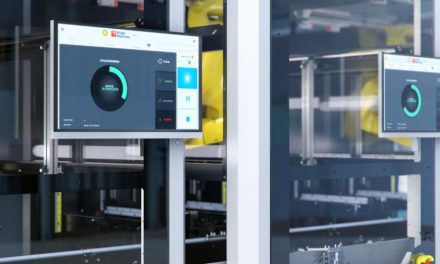3D Printing Is the Future of Aerospace and Defense Manufacturing

By Chris Huskamp, Senior Business Unit Manager – Additive Manufacturing, Jabil
Originally published on Jabil blog
A competitive edge. Whether it’s going to market quicker than your competitors, decreasing your manufacturing costs with new technologies or delivering a product far superior than what’s available on the market, a competitive edge is what it takes to win. And for the aerospace and defense industry, that edge is additive manufacturing.
Don’t get me wrong. The aerospace and defense sector has been leveraging 3D printing for many years. In fact, the market is expected to grow by more than 23 percent to reach $4.76 billion by 2023, according to MarketsandMarkets. So far, the growth and upcoming expectations have been so transformational that 70 percent of respondents say 3D printing has changed the way the industry thinks and operates in Jabil’s Aerospace and Defense Manufacturing Trends survey. Download the full survey report.
Perhaps unsurprisingly, nearly three-fourths of survey respondents said they use additive manufacturing technology for prototyping. Beyond that, 44 percent use it for repair and maintenance, 43 percent leverage it for research and development and almost four in 10 utilize it for production parts. Finally, about one-third responded that they use 3D printing for jigs, fixtures and tooling or bridge production. The use-cases are diversifying every day as new advancements are unveiled.
A few years ago, just being able to utilize 3D printing in defense and aerospace manufacturing was enough of a competitive edge. Companies quietly qualified materials and processes and utilized these technologies to gap their competition in platform capability, weight or reduced payload volume. Today, the materials focus is growing from just plastics to include metallic material, paving the way for new opportunities. When materials such as additive manufactured metals gain a strong foothold, we’ll see use cases increase dramatically within defense, aerospace and space. In fact, nearly nine out of 10 participants say they expect their 3D printing use to at least double over the next few years.
We are currently observing a familiar trend: with each new development, we see industry players pull back from the industry to focus on the new momentum. Even though we know what to expect next, the work behind the scenes is astonishing and all marching toward building a competitive edge. Therefore, it is no surprise that 36 percent say they will be investing in additive manufacturing over the next five years. This number does not include the early adopters of additive manufacturing technologies in the market sector.
Benefits of 3D Printing in the Defense and Aerospace Industries
Additive manufacturing utilization may be in its infancy in some forms, but we’re seeing adoption for parts that have a higher risk associated with it. Today, defense and aerospace industry players are feeling confident enough to move past polymeric non-structural components parts and into secondary structures and critical systems applications (space). The benefits of using additive manufacturing for aerospace and defense are plentiful.
Simplify Parts Through Bill of Materials (BOM) Consolidation
Nearly half of Jabil survey respondents say their companies have experienced design freedom thanks to additive manufacturing. From a design perspective, 3D printing brings a lot to the table: but the key is to think beyond individual parts.
For example, a fan within a cooling system is made up of as many as 73 labor-intensive and time-consuming parts. Through design for additive manufacturing, this fan can be consolidated down to a single part. But the benefits go beyond design. Utilizing 3D printing reduces the assembly time and possible failure points. In this way, not only does additive manufacturing simplify the part but reduces the waste created by traditional, subtractive manufacturing methods.
Although simplification is a key benefit, 3D printing also offers the opportunity to manufacture complex designs that can’t be made using traditional methods like injection molding. This allows the engineers to have the design freedom to create parts that can deliver maximum performance. From a manufacturing perspective, it means you can use smarter design geometries, eliminate tooling and fixture costs and increase the durability and lifecycle of parts.
Enable Just-in-Time, Distributed Manufacturing and Production
According to the Jabil survey, one of the main drivers of faster time-to-market in the aerospace and defense industry is supply chain innovations that enable quicker production. As you know, time-to-market is critical for success in any industry. Well, what better way to speed up your production cycles than to enable on-demand manufacturing?
No matter the certifications or qualifications required, this manufacturing process can utilize common equipment without part-specific tooling to produce specialized components anywhere in the world. For defense manufacturers, this means accessing facilities close to vital airbases or producing critical parts at the source. It also means decreased inventory costs.
Nearly half of Jabil survey respondents say additive manufacturing has helped them speed up production timelines. Since all design files are digital, they can be customized based on specific use cases. As additive manufacturing doesn’t require tool or mold changes, the process is just focused on updating designs. But mass customization doesn’t have to mean a lot size of one – it can mean going from 10,000 with traditional manufacturing methods to 100 with additive manufacturing.
Reduce Supply Chain Costs with Additive Manufacturing
Shrinking a component from 73 individual parts to one part has a massive trickle-down effect throughout your entire supply chain. The part reduction leads to a leaner supply chain: think of a tighter and improved supply chain with a more reliable and consistent production level.
For example, the industry no longer needs a foundry on the front-end to produce a metal part that is sent to a machine shop to be finished and shipped to the destination. Jabil is driving towards a vertical integration where machine shops become self-sustaining by using common, yet certified powders to deliver parts and components. When the door to localized production is opened, it eliminates the shipping costs and lead times required by traditional manufacturing methods.
3D Printing Qualification and Certification in Aerospace and Defense
Some of the industries where additive manufacturing can offer the greatest benefit are the industries that have the biggest qualification and compliance requirements. For a technology to find its way from niche to industrial use, it needs to go through key stages of maturity: the first one is the required engineering rigor to ensure stability and repeatability for volume manufacturing. The second is the documentation and characterization that is required for qualification efforts—where additive manufacturing is in currently.
Deloitte characterizes quality needs through their Additive Manufacturing Quality Pyramid, which addresses the differences between 3D printing and traditional processes. The framework showcases a quality assurance process “derived from build planning and build monitoring/inspection, linked together with feedback control.” The ultimate goal rests at the top of the pyramid and without the support of the other structural pieces, quality parts just aren’t possible.
A good rule of thumb is that additive manufacturing can deliver production capability anywhere in the world through distributed manufacturing. But several best practices must be in place to meet the stringent demands of defense and aerospace before making that capability a reality. There needs to be common processes across multiple locations to enable true build portability, which includes proper quality certifications, common equipment, a secure transfer mechanism for digital files, proper equipment calibration and consistent input materials.
Aerospace Industry Applications for 3D Printing
The first 3D-printed part used was in an Airbus test aircraft – a small titanium bracket, part of the pylon used to secure the engine – sped down the airstrip in 2014. Since then, usage of additive manufacturing has escalated rapidly, but companies are still learning how to adopt additive manufacturing solutions to glean its many benefits: maximizing production output, shortening time-to-market, reducing costs and more.
The demand for new commercial airplanes is – if you’ll excuse the pun – skyrocketing. Every 15 years, the worldwide fleet doubles. 3D printing can help companies with an intimidating stockpile of orders slash their production time. For example, in November 2018, Airbus reported a backlog of more than 7,000 aircraft. With its current process, this number is the equivalent of nine years of production. Similarly, at the end of September 2018, Boeing’s backlog of commercial aircraft was close to 6,000.
In aircraft design, there are numerous internal features that typically don’t lend themselves—either by volume or by complexity—to injection composites or other molding processes. Although creating these parts are cost- and time-consuming by traditional metalworking, additive manufacturing simplifies the process. In the aerospace industry, this capability is particularly useful in producing engine and turbine parts, cabin interior components and parts with defined aerodynamic properties in a shorter amount of time and at a lower cost.
With the on-demand manufacturing, easy customization and part consolidation enabled by additive manufacturing, aerospace manufacturers can significantly shorten their time-to-market. In fact, in our recent Current State of Additive Materials and 3D Printing survey, 91 percent of participants responded that 3D printing is at least twice as fast as traditional manufacturing methods. In aerospace specifically, Deloitte found that additive manufacturing reduces time-to-market by 64 percent.
But this aviational influx comes at a cost; twice the number of planes circling the earth means heavier carbon emissions, more fuel consumption and greater noise roaring from overhead. Thankfully, 3D printing can also mitigate the impact of aircraft on the environment.
According to Airbus CTO Grazia Vittadini, 3D printing has the potential to lighten an aircraft by 55 percent. The Boeing 737-800, an average-sized plane flown by many popular commercial airlines, weighs 90,000 pounds (excluding fuel and passengers), but a reduction of 55 percent would bring it down to a little over 40,000 pounds. Since the weight of an aircraft directly correlates with its fuel consumption over the useful life of the airframe, this will decrease the amount of fuel planes consume. In other words, 3D printing increases the sustainability of the aerospace industry.
Defense Industry Applications for 3D Printing
Although the defense sector gleans many of the benefits I’ve already discussed, there are some aspects of 3D printing that are useful for specific defense applications. For example, 3D printing could enable on-the-fly forward operating base repairs. It also eliminates hard tooling thereby increasing the security around a company’s design IP while lowering non-recurring costs and ensuring life cycle support (no lost or damaged tools).
Since Russia sent the first satellite into orbit in October 1957, more than 40 countries have launched around 8,100 satellites. Currently, there are 1,957 active satellites circling Earth; although it is not possible to know exactly how many are military – partially because of secrecy and partially because of dual-purpose missions – 422 are registered as military, primarily acting to gather intelligence, navigate and communicate.
There are two central challenges in constructing satellite brackets. First, they require a geometrically specific design to affix the component securely to the body of the satellite. Second, these brackets act as an insulator, withstanding the wide scope of temperatures outside the earth’s atmosphere, a range of about -274 to 212 degrees Fahrenheit. The barometrical stress on these components is extremely high.
Airbus engineers in the defense and space division found that additive manufacturing is the most efficient approach for creating satellite parts. Using titanium, the designers and engineers actualized many of the benefits of 3D printing: the lack of waste led to cost savings, part consolidation reduced the hours spent in assembly, the optimized geometry resulted in higher performance without the constraints of traditional manufacturing and the lightweight components created fuel savings for the entire project.
In addition to mechanical parts, 3D printing’s biggest benefit to the defense industry may be its ability to produce functional electric components. With additive manufacturing, OEMs can churn out circuit boards and antennas at a fraction of the time, cost and materials.
Act Locally, Think Globally…and Beyond
An enormous benefit of 3D printing is on-site production. Transporting parts and materials incurs costs of both time and money; with additive manufacturing, customized components can be printed on location. This potential for a globally distributed manufacturing network improves overall efficiency while providing significant savings, allowing companies to maintain ideal inventory levels to maximize productivity and open new value chains across industry verticals.
As expected, this is also a highly strategic capability for the defense industry. Facilities can be established near crucial airbases, and printers can be installed anywhere, from Air Force bases to aircraft carriers.
Looking into the future, this capability could enable companies to do more than think and act on a global level…it could allow them to operate beyond the boundaries of Earth. 3D printing may prove to be key for space exploration as well as lunar and planetary colonization.
Since 1960, humankind has piloted dozens of Mars missions. Some of these have been flyby, some have been long-standing orbiters, exploring the planet for years. All have had one goal: to better understand our planetary neighbor. But even before NASA’s first touchdown on the red planet, people have imagined walking, even living on Mars. However, there are several logistical challenges standing in the way of a functional Martian society. One key challenge is figuring out how to transport supplies between Earth and Mars, an average difference of 140 million miles.
3D printing could solve this problem. Instead of relying on supplies to come orbiting around the sun, settlers of the “final frontier” can use additive manufacturing to make their own tools, machine parts and more. To accomplish this with maximum efficiency, researchers at the European Space Agency and Lithoz, an Austrian manufacturing solutions company, have been experimenting with using a new material in 3D printing: moon dust. By planting 3D printers, researchers hope to empower a self-sufficient colony on Mars. They’ve developed a simulated regolith, “a type of tiny, far-out ceramic dust,” that is passed through a sieve and then mixed with a light-reacting, binding agent that holds dust particles together. The process is similar to Direct Metal Laser Sintering (DMLS) or Selective Laser Melting (SLM).
Whether helping an airline complete its backlog of orders or printing a wrench out of lunar dust for the first settlers of Mars, the possibilities of 3D printing in the aerospace and defense industry extend well beyond the Earth’s atmosphere. It will be interesting to see what new applications arise as additive manufacturing secures its place as an essential tool in aviation. One thing is certain: without 3D printing, the aircraft of the future will never be able to get off the ground.













